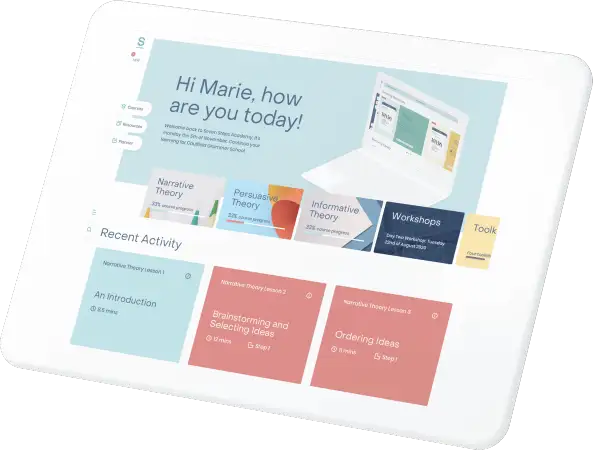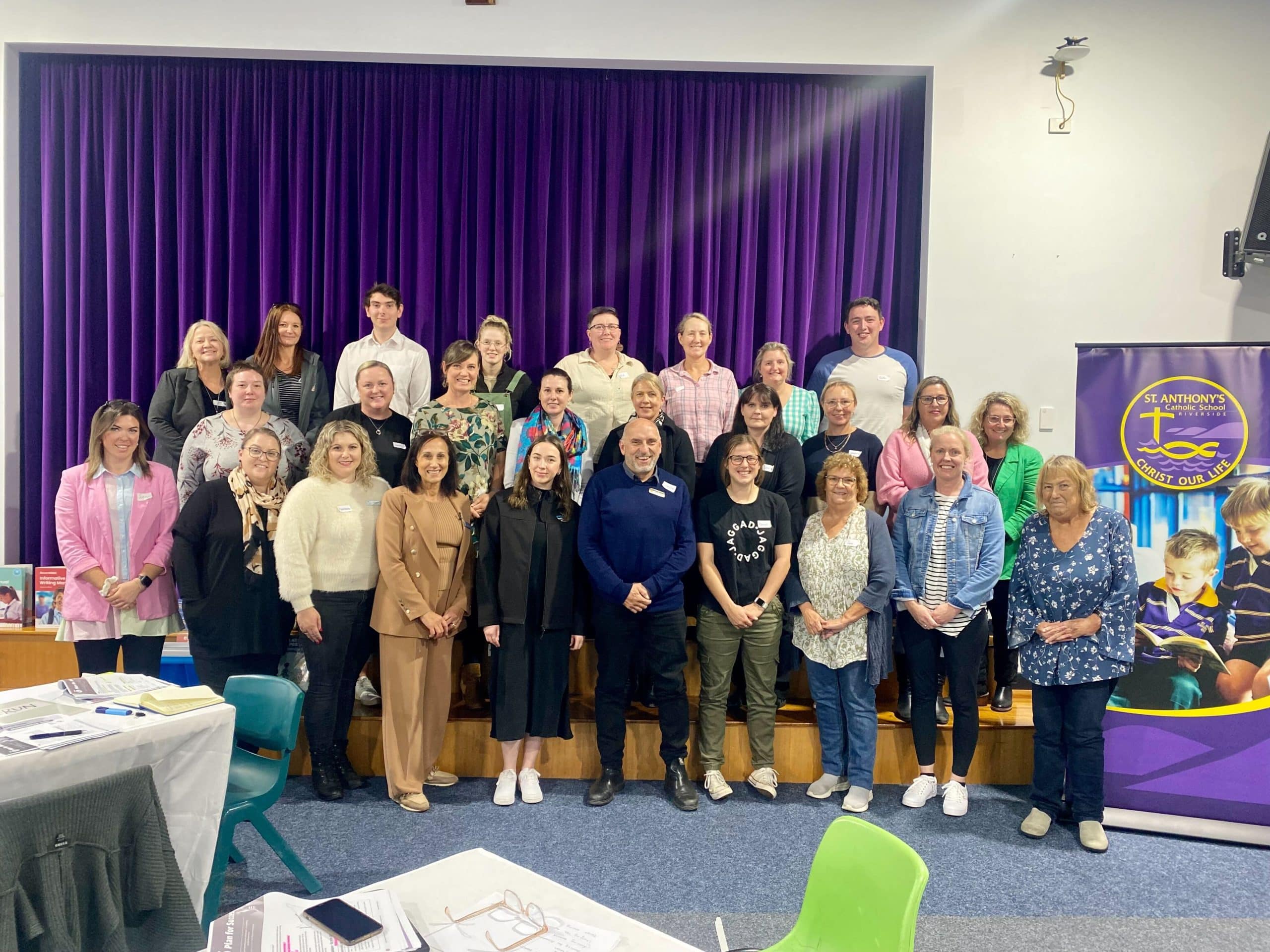Boost writing results. Build teacher confidence.
Create a common language. Engage every student.
‘The Seven Steps program is truly transforming our students to become confident and
exciting authors – as well as inspiring our staff and supporting us to foster a love of literacy.
I’ve worked with – my class LOVE it!’
~ Deb, Literacy Coordinator, Nazareth Christian College
Ready to improve writing outcomes?
Seven Steps provides the simple answer: a proven, whole-school approach that gives you a clear plan, builds teacher confidence and creates a love of writing.
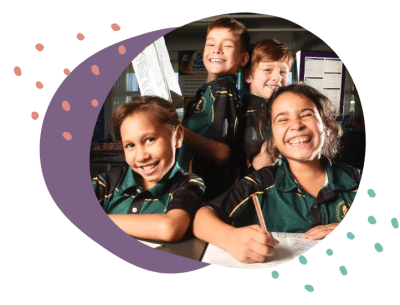
Evidence-based pedagogy
The Seven Steps writing approach is based on best-practice pedagogy and supported by years of educational research.
Proven to improve writing results
But its impact is much more than data – it boosts student engagement, teaching confidence, classroom behaviour and creativity!
Explicit instruction
Each writing skill is systematically taught in small ‘chunks’, followed by lots of deliberate (and fun!) practice. Lessons follow the Gradual Release model – I do, We do, You do.
Accredited whole-school training
Seven Steps workshops tick all the boxes – NESA-accredited and SA preferred provider panel member. See the Teaching Standards covered.
The difference a whole school program can make
Vanessa Blythe is a school principal in Western Australia who has implemented Seven Steps in multiple schools. Hear about her experience and learn how, as a school leader, you can also achieve the ultimate success with a new program.
Training and resources for your whole school
Tackling writing school-wide can feel very overwhelming. But it doesn’t have to be!
Seven Steps has been working one-on-one with schools for over 20 years, supporting them every Step of the way on their journey to improve student writing.
We will work with you to build the perfect package of training and teaching resources to help you progress every student, school-wide.
Workshops
Eye-opening, practical and fun
Get started at the award-winning Workshop One – an immersive training experience that’s guaranteed to spark real change in your school.
Our expert presenters deliver the perfect balance of theory, practical application and evidence (not to mention, the best tips and tricks!), so teachers come away confident and excited to get started.
That’s only the beginning. When your school is ready to take student writing to the next level, we offer Workshop Two: Putting It All Together. For early years teachers, Applying the Seven Steps with Beginner Writers will show them how to teach writing from Foundation to Year 2.
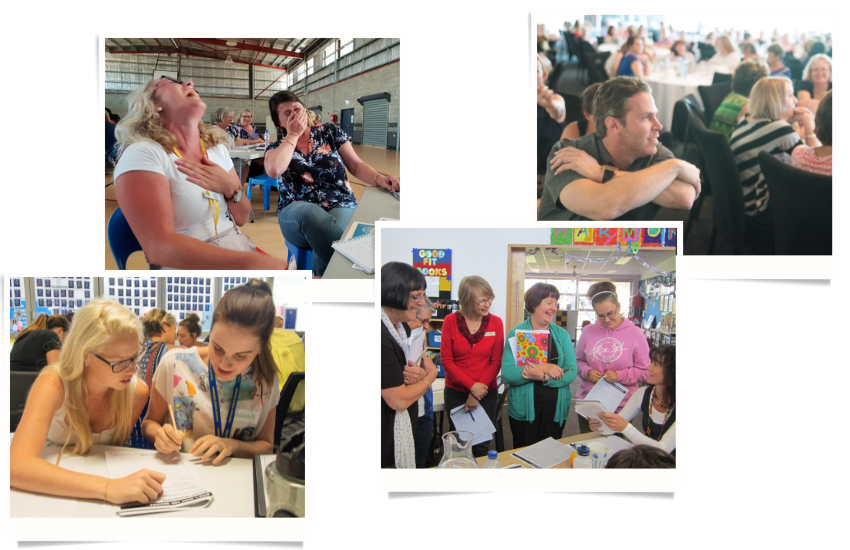
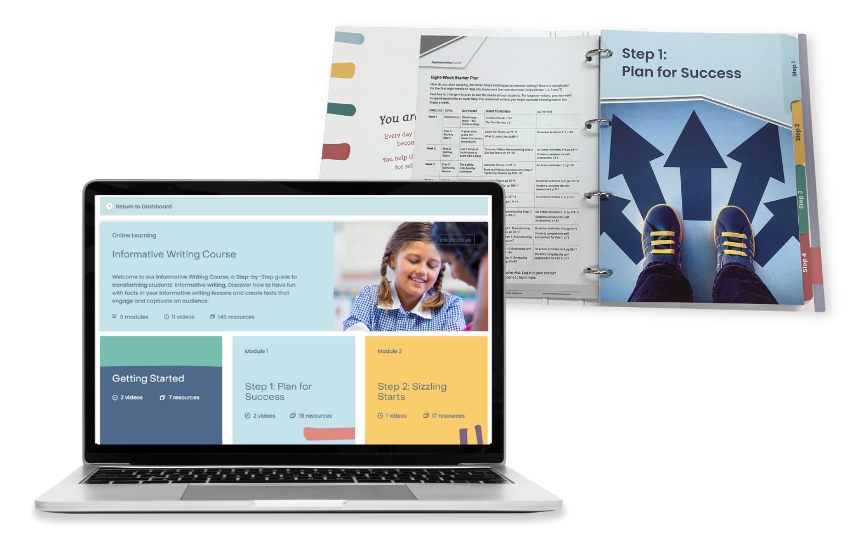
Resources
Designed by educators for educators
It’s easy to learn, teach, apply and assess the Seven Steps with our award-winning resources – online member site Teacher Hub and the writing manuals (available in print and digital format).
Your school will have a Step-by-Step guide to rolling out the Seven Steps across text types, as well as access to classroom-ready writing resources and assessment tools.
That’s all the support you need to easily develop implementation plans, build a common language and continuously improve student writing and engagement.
Seven Steps Impact Report
Learn how Seven Steps is changing schools across Australia and transforming writing for life!
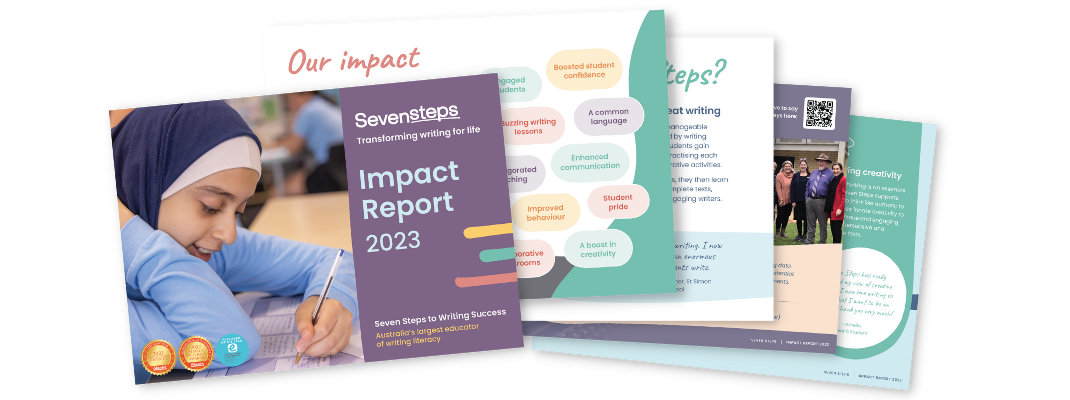
Benefits of a Seven Steps package
With a Seven Steps package, you will get the training, resources and support to set up your whole school or network for writing success.
Consistency schoolwide
Seven Steps can be implemented across the whole school, for all ability levels. Consistency and a common language drives whole-school change and builds momentum year after year.
Empowered (and excited!) teachers
The Seven Steps are practical, simple and fun. Teachers leave our workshops with the tools and confidence to create a vibrant writing classroom full of ideas, laughter and great writing.
Students who love writing!
Seven Steps shifts students’ writing mindsets. No more groans at writing time. Instead, writing classrooms are buzzing with engaged and confident writers.
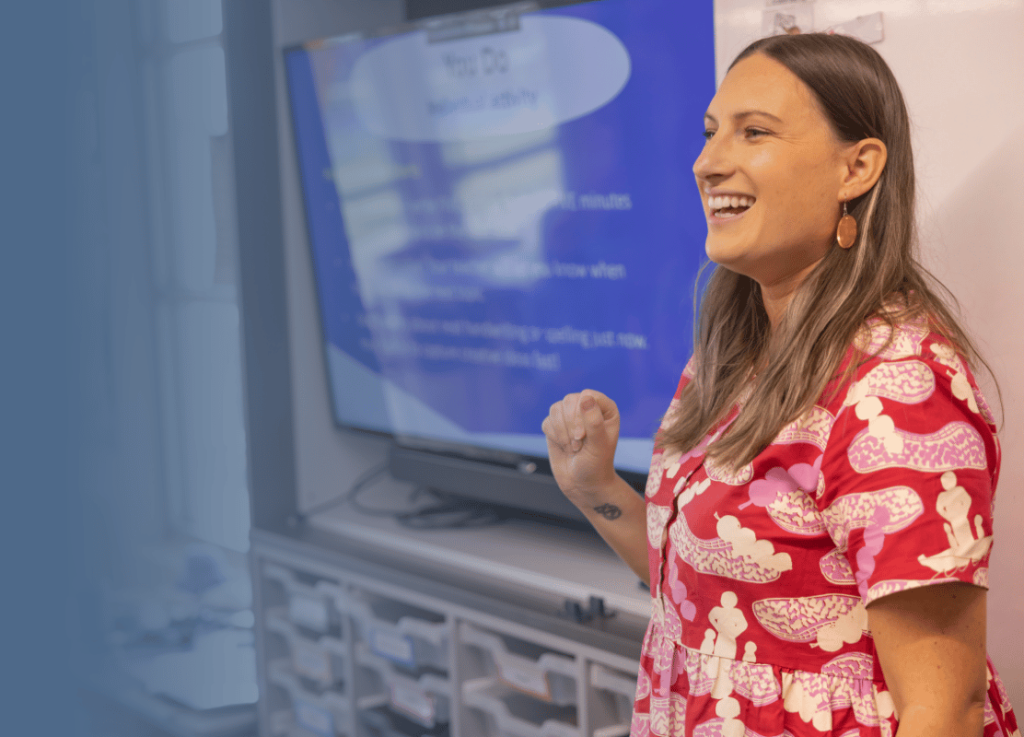
“This has cut down on my planning time for writing. The classroom PowerPoints are my favourites – easy to use and kids love them!”
~ Laura Potts, Classroom teacher
Frequently asked questions
Why are the prices listed as 'From ...'?
When we provide you with a quote for your school package, it will include all presenting fees, travel and accommodation and resources for your school.
We can’t list the exact price of our packages above, as there are a few variables that we need to work out:
- Teacher Hub subscription prices vary depending on the size of your school
- Travel and accommodation for schools that are remote need to be added to the price.
How many teachers can come to a workshop at our school?
To ensure the best experience for your teachers, we usually limit our face-to-face workshops to 45 teachers and our online workshops to 60. However, if you are interested in a bigger session, let us know and we can see if we can work out a solution.
Can we invite other schools or teachers to our workshop?
Absolutely! We recommend inviting teachers from other schools to share in the experience. Many schools do this, and several have told us that afterwards they’ve developed a local cluster and gone on to support each other in implementing the Seven Steps! It’s also a great way to share the costs.
Please note that each school will need to purchase their own set of resources – Seven Steps manuals and Teacher Hub subscriptions cannot be shared between schools.
Are your workshops accredited?
Workshop One
- In New South Wales, Completing Workshop One (Online): Seven Steps to Transform Writing will contribute 6 hours (face-to-face) and 5 hours and 30 minutes (online) of NSW Education Standards Authority (NESA) Accredited PD in the priority area of Delivery and Assessment of NSW Curriculum/EYLF addressing standard descriptors 2.5.2 from the Australian Professional Standards for Teachers towards maintaining Proficient Teacher Accreditation in NSW.
- In South Australia, Seven Steps is a preferred supplier of literacy and numeracy professional learning services to the South Australian Department for Education.
Workshop Two
- In New South Wales, completing Seven Steps to Writing Success Workshop Two: Putting It All Together (both face-to-face and online) will contribute 6 hours of NSW Education Standards Authority (NESA) Accredited PD in the priority area of Delivery and assessment of NSW Curriculum/Early Years Learning Framework addressing standard descriptors 2.5.2, 5.2.2 from the Australian Professional Standards for Teachers towards maintaining Proficient Teacher Accreditation in NSW.
- In South Australia, Seven Steps is a preferred supplier of literacy and numeracy professional learning services to the South Australian Department for Education.
How do I get a quote for a Seven Steps package?
Simply click on your preferred package above, and we can send you a quote for your school. Or give us a call on (03) 9521 8439 and we’d be happy to chat through your needs.
Can you train multiple schools or a whole network?
Yes, we have trained school networks, ranging from 5 to 40 schools, in Australia and abroad. Here’s one story of success: 35% improvement in writing data across 17 schools in Papua New Guinea. Contact us on 03 9521 8439 or email [email protected] to learn more.
Can I book a workshop for after-school hours?
Yes! We know for many schools that it’s too tricky (and expensive!) to hold training during the school day. As our online workshops are broken up into 3 live, online sessions, you can choose the times that are most convenient for your school. This includes after school, during lunchtime, on a curriculum day, on the weekend or in the holidays!
Please note that we are not able to hold after-school sessions for our face-to-face workshops.
We're a regional school; are we still able to host a workshop at our school?
We’ve travelled to every part of Australia imaginable, and even internationally, to train schools. We would love to come to you!
Please give us a call on (03) 9521 8439 and we can chat about your needs. And always remember that our online workshops are a fantastic alternative!
We're a tiny school, and our budgets are very tight. Do you have anything for us?
We like to look after small schools! So we have created a special package for schools with less than 80 students. It includes online workshops, Teacher Hub and more! Simply email us and ask about our ‘Exclusive Small School Bundle’.
